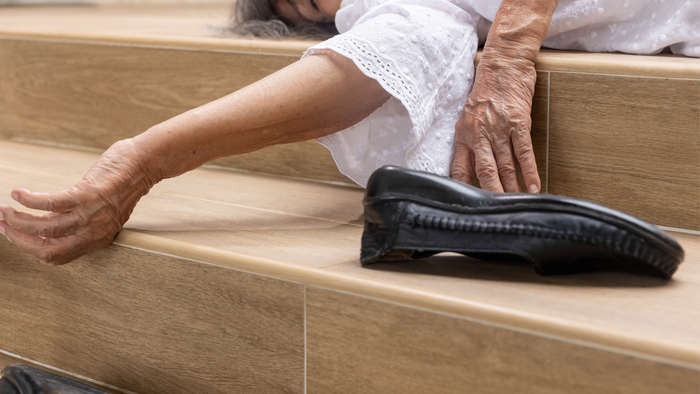Dangers of Falling for the Elderly

Falling can be a serious issue for the elderly population, as it can lead to injuries and even death. According to the Centers for Disease Control and Prevention (CDC), falls are the leading cause of injury and death among older adults, with one in four Americans over the age of 65 falling each year. Falls can result in fractures, head injuries, and even loss of independence, as older adults may no longer be able to live on their own after a fall. It is important for caregivers and loved ones to understand the dangers of falling and take steps to prevent falls from occurring and ensure SOS personal alarms are in place for when falls occur.
There are many factors that can contribute to falls in the elderly. As we age, our bodies naturally become weaker and our balance may not be as good as it once was. Medical conditions such as arthritis, Parkinson's disease, and vision impairments can also increase the risk of falls. Certain medications, such as sedatives and blood pressure medications, can also cause dizziness or impair balance, leading to falls.
There are several things that can be done to prevent falls in the elderly and maintain independent living. The first step is to identify any fall risks and address them. This may include making home modifications, such as installing handrails, improving lighting, and removing tripping hazards. It is also important to encourage older adults to participate in regular physical activity to improve their strength and balance.
Another important step in preventing falls is to have regular check-ups with a healthcare provider. This can help identify any underlying medical conditions that may increase the risk of falls. It is also important to review medications with a healthcare provider to see if any could be contributing to a higher risk of falls.
If an older adult has already fallen or is at high risk of falling, there are several things that can be done to help prevent future falls. These include using assistive devices, such as walkers or canes, and wearing shoes with non-slip soles. It is also important to encourage the older adult to ask for help when needed, and to have a plan in place in case of a fall. For instance, WatchOvers.com provide personal alarms for the elderly with fall alerts and automatic calling so you don’t need to press the button if you have a fall, it will make the phone call to your contacts immediately.
In conclusion, falls can be a serious issue for the elderly population, leading to injuries and even death. It is important for caregivers and loved ones to understand the dangers of falling and take steps to prevent falls from occurring. This may include making home modifications, participating in regular physical activity, and having regular check-ups with a healthcare provider. If an older adult has already fallen or is at high risk of falling, assistive devices and a plan in case of a fall can also be helpful in preventing future falls.



